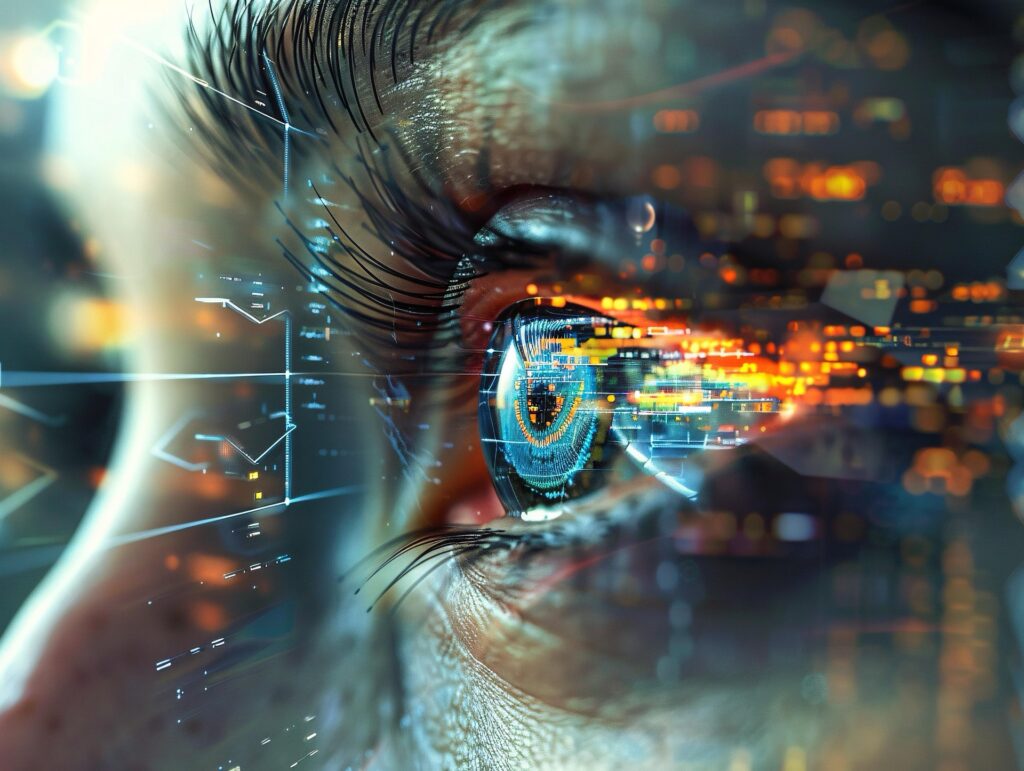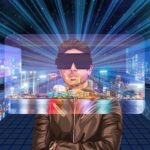
Introduction
Imagine looking through your smart phone camera at the street and seeing is not just the buildings and cars but also floating restaurant reviews and historical information overlaid on landmarks or even the virtual furniture placed in your living room. This is the power of the augmented reality. A technology that superimposes computer generated imagery in to the user view of the real world. Thus providing a composite view. Unlike virtual reality. Which immerses users in a completely simulated environment in AR enhances the existing reality by adding layers of digital information. From entertainment and education to healthcare and manufacturing. AR is the rapidly transforming the way we interact with our surroundings and the information within them are same. This article will delve into the core concepts that diverse applications and underlying technologies also the exciting future prospects of augmented reality.
The Core Concepts of Augmented Reality
At its heart the AR seeks to bridge the gap between the physical and digital realms in a seamless and intuitive manner. This is achieved through the combination of a hardware and a software that will work in concert to detect the real world environment and then the overlay relevant digital content. Key components of an AR is the system typically include sensors (like cameras and the accelerometers), processors, displays (such as smart phone screens or specialized in headsets) and software algorithms. These algorithms are crucial for tasks like spatial mapping and object recognition also tracking and ensuring that the virtual elements are accurately positioned and oriented within the real world view. The experience is often interactive allowing users to manipulate and engage with the overlaid digital content. Further blurring the lines between what is real and what is computer generated.
Diverse Applications Across Industries
The versatility of AR has led to its adoption of across a wide spectrum of the industries. In retail AR allows customers to virtually “try on” the clothes and visualize furniture in their homes or see how makeup products would look on their faces and enhancing the shopping experience and potentially reducing returns. The gaming and entertainment sector has been revolutionized by AR games like Pokémon Go and that which brought virtual creatures into real world locations and interactive museum exhibits that overlay digital information onto historical artifacts. Education benefits from AR by providing immersive and also engaging learning experiences such as visualizing complex scientific concepts in 3D or taking virtual field trips.
AR in Healthcare and Manufacturing
The impact of AR extends to critical sectors like a healthcare and manufacturing. In healthcare an AR can assist surgeons by overlaying real time patient data or the 3D models of an organs during procedures and improving precision also efficiency. It can also be aid in a medical training by providing interactive simulations of a surgical techniques. In manufacturing AR can guide workers through a complex assembly processes by projecting step by step to instructions into the equipment they are working on. Leading to increased productivity and reduced errors. Furthermore AR can be used for a remote assistance and allowing experts to guide on site technicians through the repairs or maintenance procedures visually.
Underlying Technologies Powering AR
The seamless integration of virtual content with the a real world relies on the several key technologies. Computer vision algorithms enable the devices to “see” and understand their environment and to identifying objects, tracking movement also mapping spaces. Sensor fusion combines data from various sensors such as cameras, GPS and accelerometers also gyroscopes to provide a more and more accurate and to robust understanding of the user context. Display technologies range from smart phone screens and tablets to head mounted displays and holographic projections of each offering a different levels of the immersion and field of view. Advancements in processing power are crucial for handling the computationally intensive in tasks of a real time rendering and data processing required for a smooth AR experience.
The Evolution of AR Hardware
The form factor of an AR technology has to be evolved significantly. Initially many AR applications are relied on smartphones and tablets that leveraging their built in cameras and screens. The emergence of dedicated AR hardware and such as smart glasses like Microsoft Holo Lens also Magic Leap that promises a more immersive and hands free experience. These devices often incorporate advanced sensors like wider fields of view and more powerful processors that enabling more complex and interactive AR applications. While still under development and refinement these dedicated AR headsets represent a significant step towards mainstream adoption of more sophisticated AR experiences.
Challenges and Future Directions of AR
Despite its immense potential an AR faces several challenges. Technical limitations include battery life and field of view limitations in some HMDs also the need for more robust and accurate spatial mapping and tracking in the diverse environments. Social and ethical considerations are such as privacy concerns related to the data collection and the potential for a digital distraction that also need to be addressed. Looking ahead the future of AR is likely to be a shaped by advancements in artificial intelligence 5G connectivity and the development of more lightweight and power efficient also socially acceptable hardware. We can expect to see AR become increasingly integrated into our daily lives that transforming how we work and learn and communicate also interact with the world around us.
The Immersive Future of Augmented Reality
The trajectory of augmented reality points towards a deeply integrated and intuitive future seamlessly weaving digital information into the fabric of our physical world. Imagine a world that where sleek AR glasses replace smart phones in providing context aware information that instant communication and immersive entertainment directly in our field of a vision. Retail will be the revolutionized by a hyper personalized virtual to try on and in store digital assistance. Education will be the transform with interactive in 3D learning experiences overlaid onto the real classroom. Healthcare will see AR guided surgeries and the remote diagnostics becoming commonplace.
Beyond the individual applications AR will foster richer social connections through shared and augmented experiences also holographic communication. Navigation will become effortless with a dynamic in real time guidance projected onto our surroundings. The lines between the physical and digital will blur as a AR enhances our perception, empowers our actions, and fundamentally reshapes how we interact with information and each other promising a more informed that efficient and engaging reality.
Read also: Neuralink – Connecting Gap Between Brain and Machine
Conclusion
Augmented reality stands at the cusp of a transformative era that poised to redefine our relationship with technology and the physical world. By seamlessly blending digital information with our real world perceptions. AR offers a powerful new paradigm for a interaction and the engagement across numerous domains. While challenges remain in terms of technology and a societal implications that rapid pace of innovation suggests a future where AR becomes an increasingly ubiquitous and integral part of our lives enriching our experiences and unlocking new possibilities we are only beginning to imagine
Buy Now
Quantum Computing for Computer Scientists

